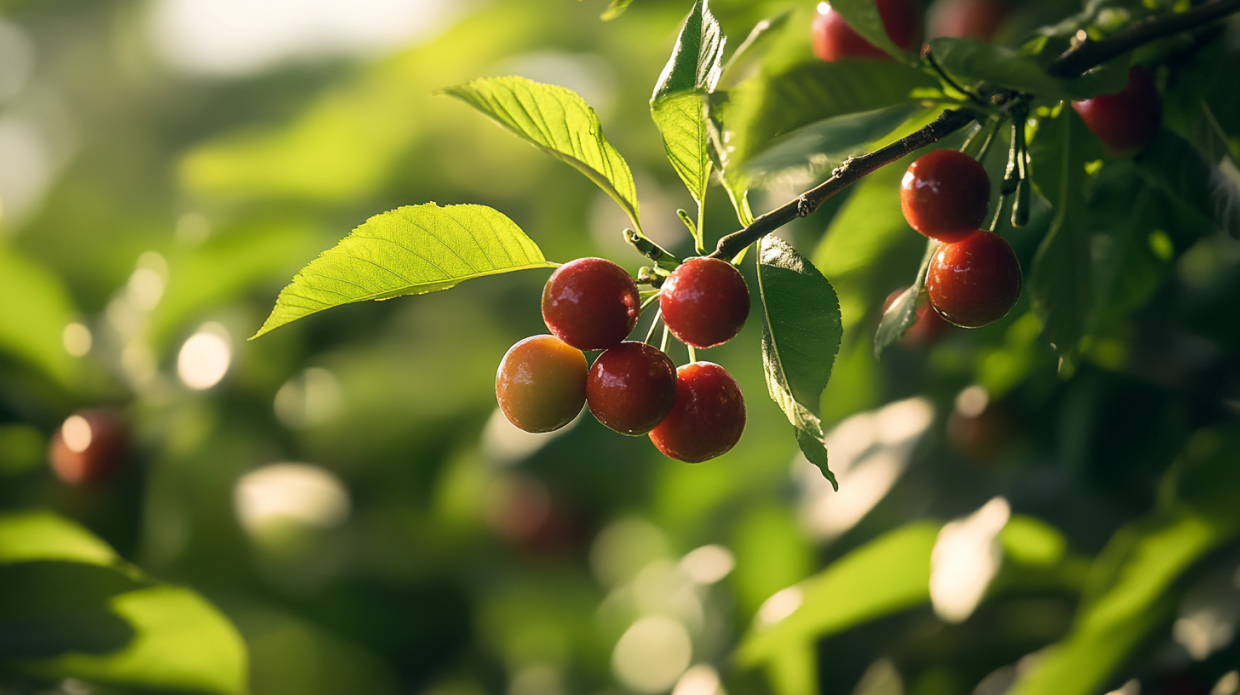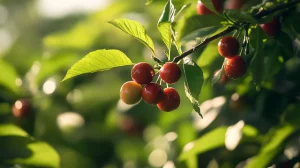
Knorr Maizena Atole Strawberry 1.6 oz
- Maizena Strawberry Flavor Atole is a delicious fortified cornstarch beverage
- Enjoy Maizena Strawberry Flavor Atole hot or cold for a tasty treat
- Each serving delivers 15% daily value for Vitamin A, Vitamin C, Thiamin, Niacin, Vitamin B6 & Zinc
- Just add to hot water or milk
- Available in multiple flavors
Rediscovering the Pink Elixir That Warms Generations of Hearts
In the tapestry of Latin American comfort foods, few threads shine as vibrantly as the delicate pink hue of Maizena de Fresa. This beloved beverage, with its silky texture and gentle strawberry embrace, has warmed countless hands and hearts across generations. As the modern world races forward with trendy superfoods and complex culinary innovations, there’s something profoundly reassuring about returning to this simple, nurturing drink that grandmother’s hands once stirred with love and patience.
Today, we dive deep into the world of this strawberry-infused cornstarch beverage – exploring its origins, perfecting its preparation, and discovering the myriad ways it continues to bring comfort in both traditional and contemporary kitchens. Whether you’re seeking nostalgia or discovering this pink delight for the first time, the journey into Maizena de Fresa promises warmth that extends far beyond the temperature of the drink itself.
What Exactly Is Maizena de Fresa?
At its heart, Maizena de Fresa is a variation of atole, a traditional hot beverage with pre-Hispanic origins that remains deeply embedded in Latin American culinary traditions, particularly in Mexico. The name itself offers clues to its composition: “Maizena” is a popular brand name for cornstarch that has become synonymous with the ingredient itself in many Spanish-speaking countries (similar to how “Kleenex” might be used for any tissue), while “fresa” simply means strawberry in Spanish.
The essence of Maizena de Fresa lies in its beautiful simplicity – a warm, thickened beverage made primarily from cornstarch, milk, and strawberries. The cornstarch creates the characteristic velvety consistency, while strawberries impart their sweet-tart flavor and characteristic pink color. Often sweetened with sugar and sometimes enhanced with vanilla or cinnamon, this drink represents comfort in its purest form.
Unlike more complex culinary creations, Maizena de Fresa doesn’t require culinary expertise or exotic ingredients. Instead, it embodies the philosophy that nourishment can be found in simplicity, that warmth can come from the most basic elements combined with care. It’s a beverage that transcends its ingredients to become something greater – a cultural touchstone and liquid memory that continues to be passed down through families.
The Comforting History Behind the Pink Cup
Before we dive into preparation methods and variations, it’s worth appreciating the cultural significance of Maizena de Fresa and atoles in general. These cornstarch-based beverages have ancient roots in Mesoamerican civilizations, where corn was not merely food but a sacred crop central to both nutrition and spiritual life.
Traditional atole was made from masa (corn dough), water, and indigenous flavorings. With Spanish colonization came new ingredients and adaptations, including milk and sugar, which transformed these beverages into something closer to what we recognize today. Fruit variations like strawberry emerged as natural evolutions, offering both flavor and the nurturing properties associated with these warm drinks.
Historically, these beverages served practical purposes beyond simple refreshment. In regions with limited resources, atoles provided substantial nourishment in an easily digestible form. For the ill, elderly, or very young, these smooth, easily-consumed drinks offered crucial calories and comfort. Maizena specifically became popular as industrialization made cornstarch widely available, offering a convenient alternative to the traditional process of nixtamalizing corn for atole.
In many Latin American households, Maizena de Fresa became associated with care and nurturing. It was the drink prepared for children before bedtime, for someone recovering from illness, or as a warm offering on chilly mornings. This emotional connection explains why, generations later, many people still experience powerful nostalgia at the first sip of this pink beverage.
Creating Maizena de Fresa: A Step-by-Step Guide
Let’s transform simple ingredients into this beloved beverage. The basic preparation method is straightforward, but as with many traditional recipes, the magic lies in the details and technique.
Classic Maizena de Fresa Recipe
Ingredients:
- 4 tablespoons cornstarch (Maizena)
- 4 cups milk (whole milk creates the richest texture)
- 1 cup fresh strawberries, hulled and chopped (or 3/4 cup frozen strawberries, thawed)
- 1/3 cup sugar (adjust according to taste and strawberry sweetness)
- 1 teaspoon vanilla extract
- Pinch of salt
- Cinnamon stick or ground cinnamon (optional)
Preparation:
- Begin by preparing your strawberries. If using fresh berries, wash them thoroughly, remove stems, and chop them into small pieces. If using frozen strawberries, thaw them completely.
- Place the strawberries in a blender with a splash of milk and puree until smooth. If you prefer a drink without seeds, strain the puree through a fine-mesh sieve.
- In a small bowl, dissolve the cornstarch in 1/4 cup of cold milk, stirring until you create a smooth slurry without lumps. This crucial step prevents clumping during cooking.
- Pour the remaining milk into a medium saucepan. If using a cinnamon stick, add it now. Heat over medium-low heat until warm but not boiling.
- Slowly pour the cornstarch mixture into the warm milk, whisking constantly. This gradual incorporation is essential for a smooth texture.
- Continue cooking and whisking for about 5-7 minutes as the mixture begins to thicken. The consistency should be smooth and coat the back of a spoon.
- Add the strawberry puree, sugar, vanilla extract, and a pinch of salt. Whisk to incorporate completely.
- Simmer gently for another 3-5 minutes, whisking occasionally to prevent the bottom from scorching. The mixture will continue to thicken slightly.
- Taste and adjust sweetness if necessary. Remove the cinnamon stick if used.
- Serve immediately in mugs, perhaps with a light dusting of ground cinnamon or a fresh strawberry garnish.
The process requires patience and attention, particularly during the thickening stage. The reward is a drink with a silky consistency that’s neither too thin nor too gelatinous – the perfect balance that marks a well-made Maizena de Fresa.
Adapting Maizena de Fresa for Dietary Needs
One of the beauties of this traditional beverage is how readily it adapts to modern dietary preferences and restrictions. Let’s explore some of the most common adaptations:
Gluten-Free Maizena de Fresa
Good news for those with celiac disease or gluten sensitivity – Maizena de Fresa is naturally gluten-free! Cornstarch contains no gluten, making this drink a safe option. However, always check the packaging on your cornstarch to ensure it’s processed in a gluten-free facility if cross-contamination is a concern.
Vegan Maizena de Fresa
Traditional Maizena de Fresa calls for milk, but plant-based alternatives work beautifully:
Ingredients:
- 4 tablespoons cornstarch
- 4 cups plant-based milk (almond, oat, soy, or coconut)
- 1 cup fresh or frozen strawberries
- 1/3 cup sugar or maple syrup
- 1 teaspoon vanilla extract
- Pinch of salt
The preparation method remains largely the same, though plant-based milks may thicken slightly differently. Oat milk often yields the creamiest result, while almond milk creates a lighter version. Coconut milk adds a complementary tropical note that pairs surprisingly well with strawberry.
Natural Sweetening Options
While traditional recipes use white sugar, there are numerous ways to sweeten Maizena de Fresa naturally:
- Maple syrup: Adds a subtle complexity that complements the strawberries
- Honey: Creates a floral sweetness (not suitable for strict vegans)
- Agave nectar: Provides sweetness with a lower glycemic impact
- Dates: Pureed soft dates can be incorporated for natural sweetness
- Stevia or monk fruit: Zero-calorie natural options for those monitoring sugar intake
The key is adding your chosen sweetener to taste, as natural strawberries vary significantly in sweetness depending on variety and ripeness.
The Nutritional Profile of Maizena de Fresa
Understanding the nutritional value of Maizena de Fresa helps appreciate how this drink fits into a balanced diet. A typical serving (8 ounces/240ml) of traditional Maizena de Fresa made with whole milk contains approximately:
- Calories: 180-220 (varies based on milk type and sweetener amount)
- Protein: 6-8 grams
- Fat: 6-8 grams (lower with reduced-fat milk)
- Carbohydrates: 25-30 grams
- Fiber: 1-2 grams
- Calcium: 20-30% of daily value
- Vitamin C: 15-20% of daily value (from strawberries)
- Vitamin A, D, and B vitamins: Varies based on milk fortification
The caloric content makes Maizena de Fresa substantial enough to serve as a light meal on its own, particularly during illness when appetite might be diminished. The protein content provides satiety, while the carbohydrates offer quick energy.
From a nutritional perspective, this beverage’s strengths include:
- Easily digestible nutrients – Particularly valuable for young children, elderly individuals, or those recuperating from illness
- Calcium content – Supports bone health
- Antioxidants from strawberries – Including anthocyanins which have anti-inflammatory properties
- Hydration with substance – More nourishing than plain water for those needing additional calories
While not a low-calorie option, Maizena de Fresa can be modified by using lower-fat milk and reducing sugar for those monitoring caloric intake. Its fundamental purpose isn’t as a health food per se, but rather as nourishing comfort – something that feeds both body and spirit.
Mastering the Technique: Troubleshooting Common Challenges
Even with its simple ingredient list, achieving the perfect Maizena de Fresa requires some finesse. Here are solutions to common challenges:
Preventing Lumps
Lumps are perhaps the most common issue when preparing cornstarch-based beverages. To prevent them:
- Always create a slurry first – Mix cornstarch with cold liquid before adding to hot liquid
- Whisk constantly during the critical first minutes of cooking
- Add the cornstarch mixture gradually rather than all at once
- Use a fine-mesh strainer as a last resort if lumps form – pour the mixture through before serving
Achieving the Perfect Thickness
The ideal consistency of Maizena de Fresa is subjective, but it should coat a spoon without being gelatinous. If your beverage is:
- Too thin: Mix an additional teaspoon of cornstarch with cold milk and slowly incorporate into the simmering mixture
- Too thick: Gradually add warm milk while whisking until desired consistency is achieved
Remember that Maizena de Fresa will continue to thicken slightly as it cools, so it’s better to err on the side of slightly thinner while cooking.
Balancing Strawberry Flavor
The strawberry flavor should be present but gentle. If your drink is:
- Too subtle: Add a few drops of natural strawberry extract or increase fresh strawberry puree
- Too intense: Balance with a touch more vanilla or a hint of almond extract
- Not pink enough: A tiny drop of natural food coloring can enhance the visual appeal without affecting flavor
Beyond the Basic: Creative Variations on Maizena de Fresa
While the classic recipe holds timeless appeal, there are numerous ways to create variations that maintain the essence while offering new flavor dimensions:
Strawberry-Coconut Maizena
Replace half the milk with coconut milk and add a tablespoon of shredded coconut for a tropical twist. The coconut complements the strawberry beautifully while adding textural interest.
Spiced Strawberry Maizena
Enhance the warmth factor by adding warming spices like:
- A cinnamon stick (traditional)
- Star anise (for a subtle licorice note)
- Cardamom pods (for a sophisticated floral quality)
- A pinch of nutmeg (for depth)
Chocolate-Strawberry Maizena
For chocolate lovers, add 1-2 tablespoons of unsweetened cocoa powder to the mixture. The combination of chocolate and strawberry creates a dessert-like experience reminiscent of chocolate-covered strawberries.
Strawberry-Citrus Maizena
Add a teaspoon of lemon or orange zest for a bright, complex flavor profile. The citrus notes highlight the natural fruity qualities of the strawberries.
Protein-Enhanced Maizena de Fresa
For a more nutritionally substantial version, whisk in 2 tablespoons of unflavored or vanilla protein powder once the mixture has cooled slightly (to prevent the protein from denaturing).
Serving Suggestions: Beyond the Mug
While traditionally served hot in a mug, there are creative ways to present and enjoy Maizena de Fresa:
Chilled Strawberry Maizena
Yes, you can serve Maizena de Fresa cold! Prepare according to the standard recipe, then:
- Allow to cool completely
- Refrigerate for at least 4 hours
- Before serving, whisk vigorously or briefly blend to restore smoothness
- Serve over ice with a fresh strawberry garnish
The chilled version makes a refreshing summer treat while maintaining the comfort factor.
Maizena de Fresa Parfait
Layer cooled, thickened Maizena de Fresa with yogurt, granola, and fresh strawberries in a glass for a beautiful breakfast or dessert parfait.
Strawberry Maizena Popsicles
Pour slightly thickened Maizena de Fresa into popsicle molds and freeze for a nostalgic frozen treat that children particularly enjoy.
Companion Servings
Maizena de Fresa pairs wonderfully with:
- Pan dulce or conchas (sweet Mexican bread)
- Buttered toast with cinnamon
- Shortbread cookies
- Churros for dipping
- Fresh fruit for contrast
The Cultural Significance: More Than Just a Drink
Understanding Maizena de Fresa in its cultural context enriches the experience beyond mere consumption. This beverage represents several important cultural values:
Care and Nurturing
In many Latin American households, preparing atole or Maizena variants represented an act of care. The time spent stirring at the stove translated directly into love made tangible. Many adults recall being served this beverage during childhood illness or on cold mornings before school – moments when caregiving was expressed through food.
Resourcefulness and Accessibility
The ability to create something nourishing and comforting from basic pantry staples represents the resourcefulness central to many culinary traditions. Even in households with limited means, the ingredients for Maizena de Fresa were often accessible, making comfort available to all.
Intergenerational Connection
Recipes like Maizena de Fresa get passed down through generations, often through observation rather than written instructions. The knowledge of how to achieve the perfect consistency or balance of flavors connects family members across time, preserving cultural heritage through something as simple as a strawberry drink.
Storing and Reheating Tips
While Maizena de Fresa is best enjoyed freshly made, practical considerations sometimes require storage and reheating:
Storage Guidelines
If you have leftover Maizena de Fresa:
- Allow it to cool completely
- Transfer to an airtight container
- Refrigerate for up to 3 days
As it sits, the mixture will continue to thicken and may develop a skin on top. This is normal and doesn’t indicate spoilage.
Reheating Methods
When reheating stored Maizena de Fresa:
Stovetop Method (Preferred):
- Transfer the mixture to a saucepan
- Add a splash of fresh milk
- Heat over low-medium heat, whisking constantly
- Continue whisking until smooth and heated through
Microwave Method:
- Transfer a portion to a microwave-safe container
- Add a tablespoon of fresh milk and stir
- Cover with a microwave-safe lid or paper towel
- Heat at 50% power in 30-second intervals, stirring between each
- Continue until heated through and smooth
Regardless of method, you may need to add additional liquid as the cornstarch continues to absorb moisture during storage.
Maizena de Fresa in the Modern Kitchen
While deeply traditional, Maizena de Fresa finds new relevance in contemporary contexts:
For Busy Parents
In a world of processed children’s foods, Maizena de Fresa offers a simple, recognizable alternative you can prepare with ingredients you can pronounce. It works well in insulated containers for school lunches or after-school activities when a nourishing option is needed.
For Wellness Enthusiasts
The adaptability of Maizena de Fresa allows for modernization with superfoods:
- Add a teaspoon of ground flaxseed for omega-3 fatty acids
- Incorporate a small amount of chia seeds for additional fiber
- Use adaptogens like ashwagandha or reishi in small amounts for potential wellness benefits
- Boost with collagen powder for enhanced protein content (non-vegan)
For Culinary Experimentalists
The basic technique of Maizena de Fresa opens doors to creative exploration:
- Substitute other fruits like raspberries, blueberries, or mangoes
- Explore different flavor extracts beyond vanilla
- Test combinations like strawberry-basil or strawberry-lavender for sophisticated twists
- Use it as a base for unique hot cocktails by adding a splash of complementary spirits
A Final Reflection: The Timelessness of Simple Comfort
In our era of culinary complexity and constant innovation, there’s profound value in returning to fundamentals. Maizena de Fresa reminds us that comfort often comes not from the exotic or expensive, but from the careful preparation of humble ingredients.
This pink beverage connects us to generations past, to childhood memories, and to cultural traditions that prioritized nourishment of both body and spirit. Its enduring appeal speaks to universal human needs that transcend time and trends – the need for warmth, for sweetness, for care made tangible.
Whether you’re recreating a recipe from your childhood or discovering this traditional beverage for the first time, Maizena de Fresa offers more than just strawberry-flavored sustenance. It provides a moment of pause in busy lives, an opportunity to practice patience at the stove, and a chance to participate in a culinary tradition that has comforted countless people across generations.
In each steaming cup of Maizena de Fresa, we find not just a beverage, but a connection – to our heritage, to those who cared for us, and to the simple pleasure of nourishment lovingly prepared. Perhaps that’s why, despite its simplicity, it continues to hold such a special place in kitchens and hearts alike.






